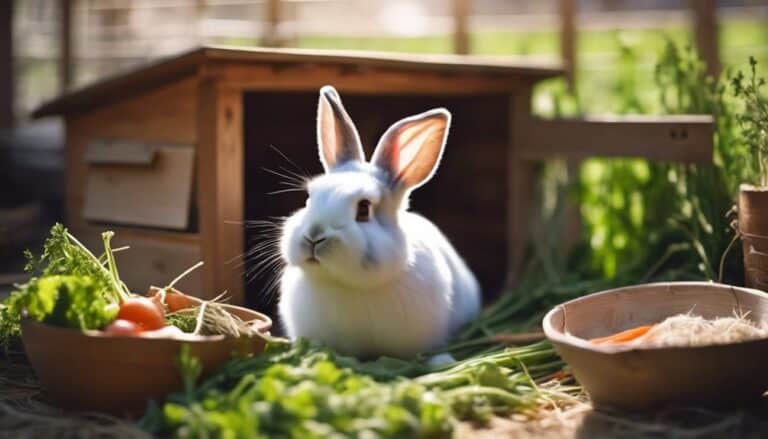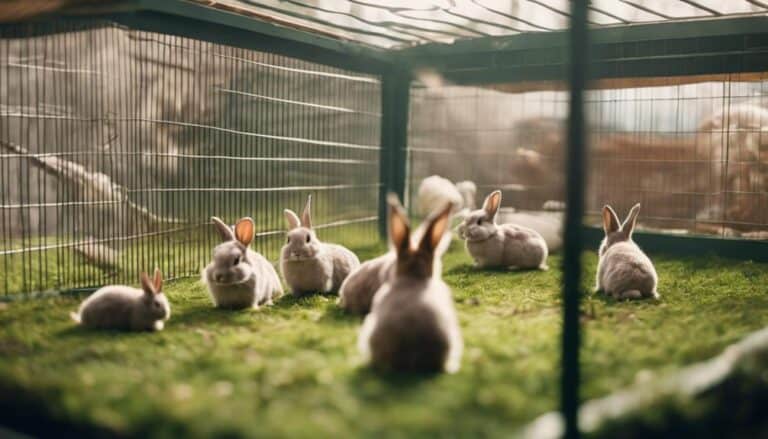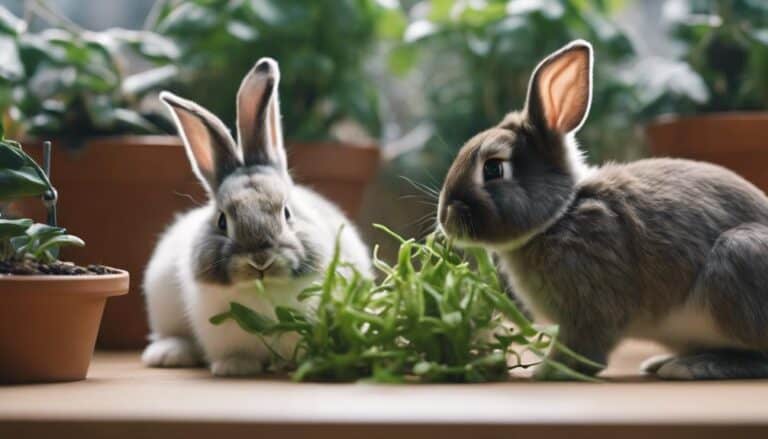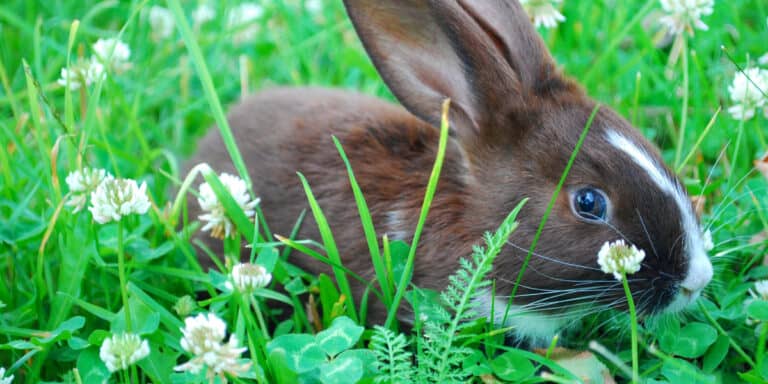Did you know that bunnies have specific litter preferences based on their breed and individual habits?
Understanding these preferences can greatly impact the success of your litter management routine. By implementing targeted strategies and making simple adjustments, you can create a harmonious environment for both you and your furry friend.
Stay tuned to discover expert tips and insider tricks to elevate your bunny litter management game and guarantee a cleaner, healthier home for your beloved pet.
Contents
- 1 Key Takeaways
- 2 Choosing the Right Rabbit Litter
- 3 Effective Litter Box Placement
- 4 Litter Training Techniques for Bunnies
- 5 Maintaining a Clean Bunny Environment
- 6 Addressing Common Litter Box Issues
- 7 Tips for Successful Bunny Litter Management
- 8 Additional Resources for Bunny Litter Care
- 9 Frequently Asked Questions
- 10 Conclusion
Key Takeaways
- Choose absorbent and safe litter like recycled paper or compressed wood.
- Place litter boxes strategically in quiet, accessible spots for bunnies.
- Maintain cleanliness by scooping daily, changing litter regularly, and using odor control methods.
- Utilize expert resources for guidance on litter selection, training, and creating a healthy bunny environment.
Choosing the Right Rabbit Litter
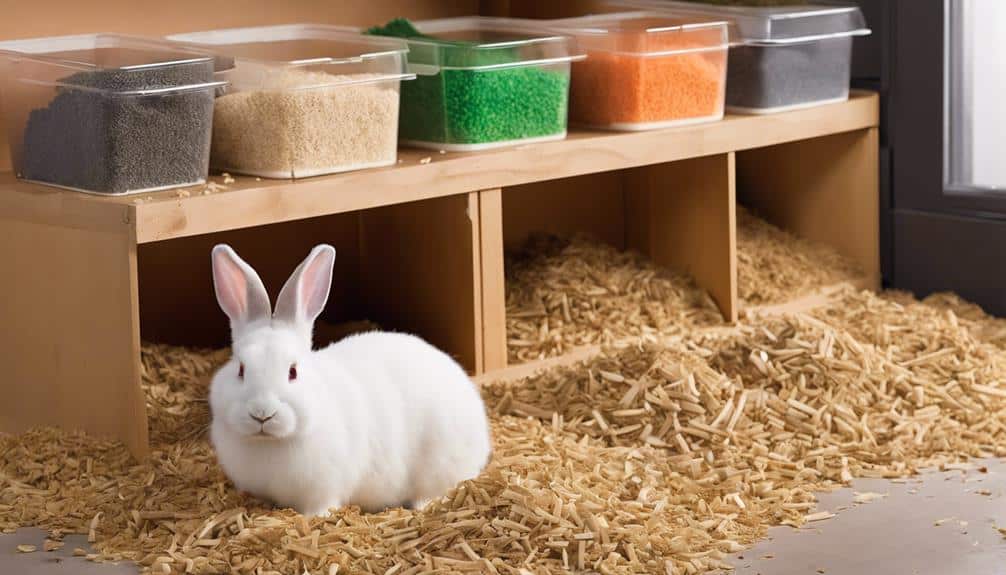
When selecting the most suitable litter for your rabbit, consider opting for recycled paper, compressed wood, or cellulose fiber options to guarantee maximum absorbency, safety, and comfort.
Clean litter boxes are essential for successful rabbit litter training. Recycled paper litters aren't only absorbent but also eco-friendly, making them a great choice for conscientious pet owners.
Compressed wood or sawdust pellets offer affordability, low dust levels, and effective odor control, ensuring a pleasant environment for both you and your rabbit.
Cellulose fiber litters, such as CareFresh Rabbit Litter, are soft, comfortable, and excellent at absorbing moisture, providing your rabbit with a cozy spot to rest and play.
Remember to avoid pine and cedar shavings, as they can be toxic to rabbits. Proper training and consistent cleaning of the litter box, especially in the corner where rabbits tend to go, are key to maintaining a clean and hygienic living space for your furry friend.
Effective Litter Box Placement
When placing your rabbit's litter box, remember to choose a quiet, low-traffic spot to guarantee your furry friend feels secure.
Make sure the box is easily accessible for your rabbit, promoting regular use.
Consider placing the litter box in a corner, as rabbits often prefer this location for their bathroom needs.
Ideal Box Location
For best litter box usage by your rabbit, place the box in a quiet, low-traffic area that offers guarantee and security. Consider situating the litter box in a corner, as rabbits tend to prefer eliminating in corners.
Guarantee easy accessibility for your rabbit by keeping the box free from obstacles. To maintain hygiene, avoid locating the litter box near food and water bowls, promoting a clear separation of spaces.
In larger homes or for rabbits with free roam, multiple litter boxes in different areas might be necessary. By creating a quiet and easily accessible environment, you can encourage your rabbit to consistently use the litter box, promoting good habits and a clean living space.
Accessibility for Bunnies
To guarantee your bunny's litter box is effectively placed for accessibility, consider mimicking their natural instinct by situating it in a secluded corner that offers privacy and security. Here are some tips for successful rabbit litter box placement:
- Corner Placement: Rabbits prefer corners for their bathroom needs, so choose a corner for the litter box to provide a sense of security.
- Multiple Boxes: In larger homes, consider having multiple litter boxes to ensure convenient access for your bunny.
- Accessible Location: Place the litter box where your rabbit spends the most time to encourage regular use.
- Safe and Comfortable: Opt for secluded areas or spots where your rabbit feels safe and comfortable to promote successful litter box usage.
Litter Training Techniques for Bunnies
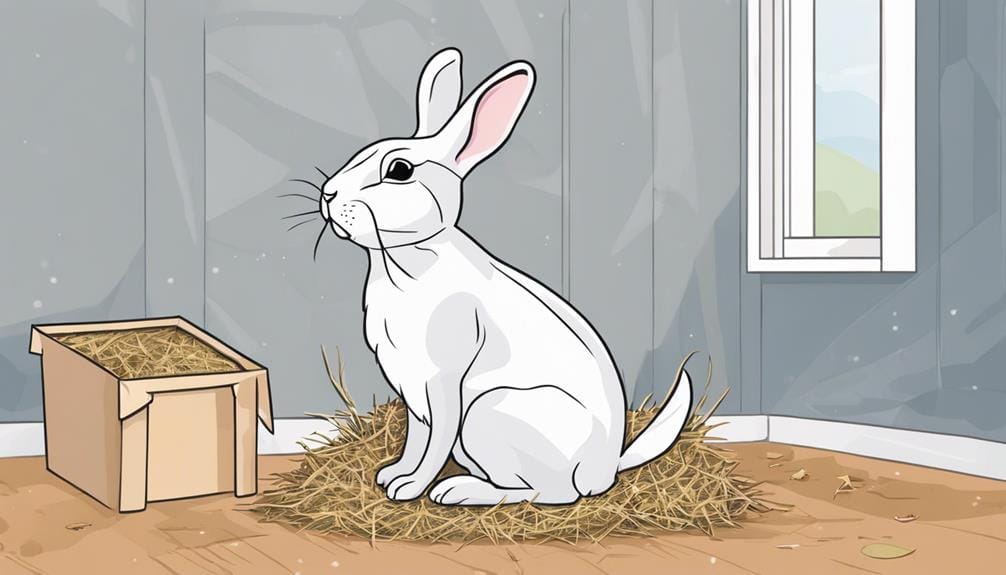
Implementing effective litter training techniques for bunnies requires consistent reinforcement of desired behaviors and strategic placement of litter boxes in their living space. Spaying or neutering your rabbit is a critical step in improving litter training success, as it helps reduce territorial marking behaviors.
The House Rabbit Society recommends using multiple litter boxes, especially during the initial stages of training, to reinforce the habit of using a designated area for elimination. To encourage proper litter box use, consider placing fresh hay either above or inside the litter box, as rabbits enjoy munching on hay while they use the box.
Remember to refrain from scolding your bunny for accidents outside the litter box, as this can lead to stress and setbacks in the training journey. Instead, focus on consistency, patience, and positive reinforcement to guide your bunny towards successful potty training.
Maintaining a Clean Bunny Environment
To maintain a clean environment for your bunny, focus on odor control techniques and establish a consistent cleaning schedule.
Regularly scooping out soiled litter and using a vinegar and water solution to clean the litter box are effective strategies.
Odor Control Techniques
For effective odor control in your bunny's living space, utilizing a high-quality, absorbent litter is essential. Here are some techniques to help you maintain a fresh and clean environment for your furry friend:
- Guarantee the litter regularly: Guarantee you change the litter at least every few days to prevent odor buildup.
- Use baking soda: Place a layer of baking soda at the bottom of the litter box to effectively absorb odors.
- Consider essential oils: Add a few drops of pet-safe essential oils like lavender or peppermint to the litter for a pleasant smell.
- Ventilation: Keep your bunny's living space well-ventilated to reduce and prevent strong odors.
Cleaning Schedule Suggestions
To maintain a clean and hygienic environment for your bunny, establishing a regular cleaning schedule is vital, ensuring the overall well-being and comfort of your furry companion.
Clean the litter box daily to prevent odor buildup and maintain hygiene. Replace soiled litter with fresh litter regularly to encourage proper bunny litter habits. Promptly spot clean any accidents outside the litter box to prevent bad habits from forming.
Conduct a deep clean of the litter box and surrounding area weekly to provide a clean and healthy living space for your bunny. Always use pet-safe cleaning products to safeguard your bunny from harmful chemicals and guarantee effective odor control while maintaining hygiene.
Addressing Common Litter Box Issues
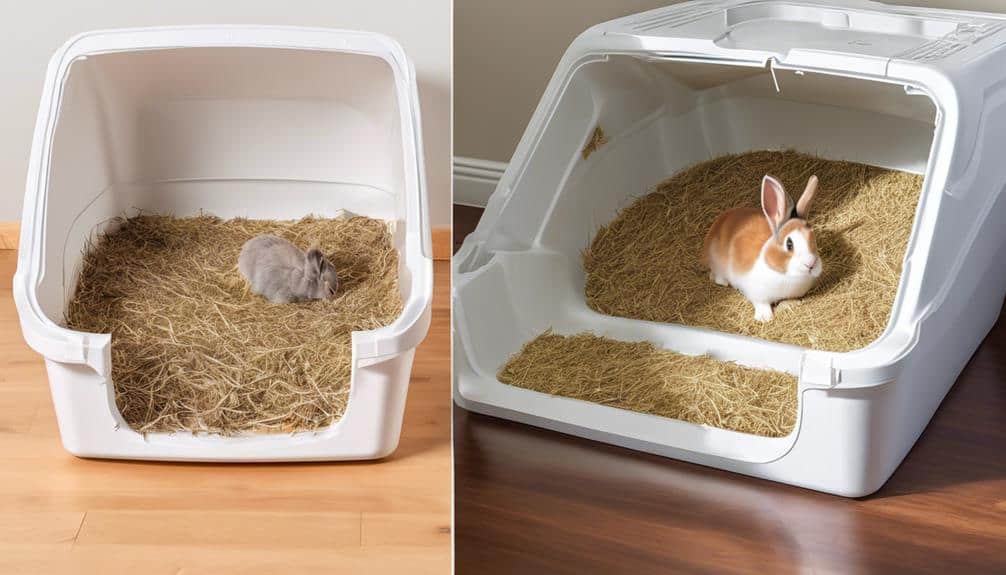
When addressing common litter box issues with your rabbit, it's important to act promptly to maintain good habits and prevent further problems. Here are some strategies to help you manage these challenges effectively:
- Provide a larger litter box: Opt for a box with higher sides to prevent rabbits from peeing over the edge, reducing mess and promoting cleanliness.
- Use a dog pee mat: Placing a mat underneath the litter box can catch any accidents and make cleanup much easier, saving you time and effort.
- Multiple litter boxes: Consider strategically placing multiple litter boxes around the house to encourage proper litter box use and reduce accidents.
- Seek veterinary advice: If your rabbit shows signs of health issues related to litter box problems, such as changes in urination habits or discomfort, consult a vet promptly to address any underlying medical issues.
Tips for Successful Bunny Litter Management
In managing your bunny's litter effectively, it's vital to think about key factors such as the size and placement of the litter box to guarantee your rabbit's comfort and successful litter training.
Start by using a large litter box with low sides to accommodate your rabbit comfortably. Place the litter box in a quiet, private corner to provide a sense of security for your bunny, promoting a safe and comfortable environment for them to use the box.
Offering fresh hay in the litter box can encourage proper bathroom habits and serve as a healthy snack for your rabbit. It's necessary to clean the litter box regularly using pet-safe cleaning products to maintain hygiene and prevent odors.
Monitor your bunny's litter box habits closely to reinforce positive behavior when they use the box correctly. By following these tips, you can establish good litter habits and a clean living environment for your furry friend.
Additional Resources for Bunny Litter Care
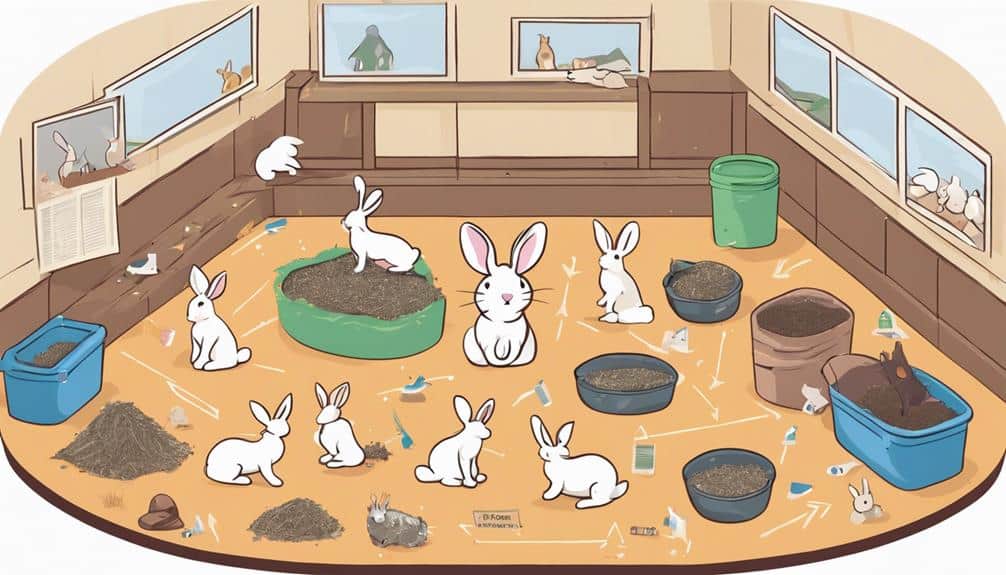
Explore valuable resources from Bunny Approved, House Rabbit Society, Indiana House Rabbit Society, and San Diego House Rabbit Society for expert guidance on bunny litter care. These organizations offer a wealth of information on maintaining a clean and healthy environment for your furry companions.
Here are some key resources to help you with bunny litter care:
- Bunny Approved: Provides reviews and recommendations on safe litter options for rabbits, ensuring you choose a product that's safe to use around your pets.
- House Rabbit Society: Offers tips on litter training and maintenance, helping you create a comfortable and hygienic space for your rabbits to use their litter box effectively.
- Indiana House Rabbit Society: Educates rabbit owners on proper litter box setup and cleaning techniques, ensuring that your rabbit's living area remains tidy and odor-free.
- San Diego House Rabbit Society: Provides resources on overcoming litter training challenges, offering solutions to help you successfully train your rabbits to use their litter box.
Frequently Asked Questions
How Do You Manage Rabbit Litter?
To manage rabbit litter effectively, use a large litter box with absorbent pet pads, fresh hay, and low sides. Regularly change the bedding, keep the area clean, and place the litter box near trash bags. Spaying/neutering helps with potty training success.
What Is the Best Way to Litter Train a Rabbit?
To litter train a rabbit effectively, place a litter box in a designated area, use positive reinforcement, offer a hay diet, maintain a consistent routine, provide a play area, supervise time outside the cage, consider spaying/neutering, stick to a cleaning schedule, bunny-proof the surroundings, and use training treats.
How Do I Stop My Rabbit From Peeing Everywhere?
To stop your rabbit from peeing everywhere, focus on training techniques and behavior modification. Establish a consistent schedule, reinforce good habits with positive rewards, and maintain a clean environment. By providing proper guidance, you can prevent accidents and promote positive peeing habits.
How Do I Get My Rabbit to Stop Pooping Everywhere?
To get your rabbit to stop pooping everywhere, focus on training techniques, clean habits, and encouraging behavior. Use positive reinforcement, rewards, and a consistent routine. Modify behavior, offer playtime rewards, create indoor spaces, and apply bunny-proofing tactics for success.
Conclusion
To sum up, by selecting the right litter, positioning the litter box strategically, and employing positive reinforcement techniques, you can effectively manage your bunny's litter.
Remember to uphold a clean environment and tackle any typical litter box issues promptly. With patience and consistency, you can establish a hygienic and comfortable space for your furry friend.
So, are you prepared to take the initial step towards a happier and healthier bunny living environment?

